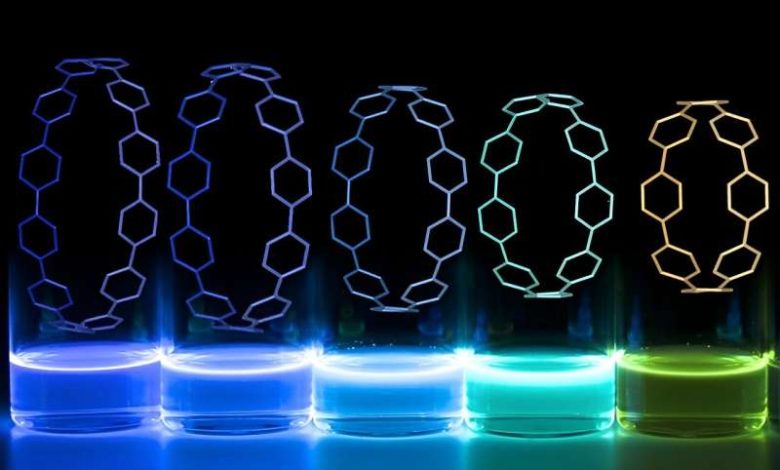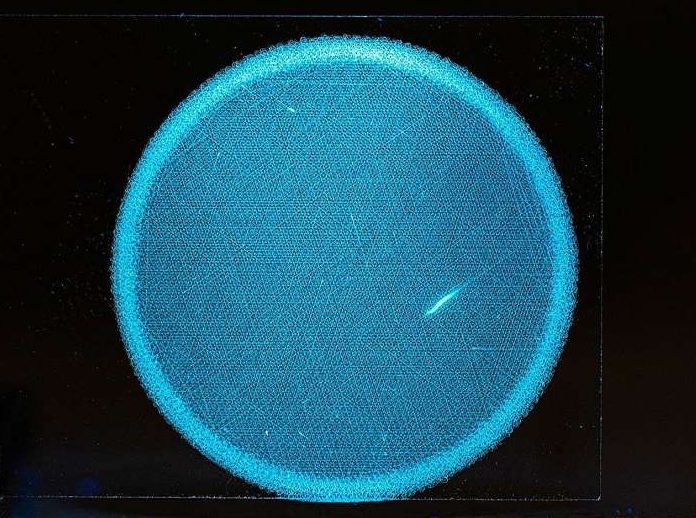Sovol SV08 Core-XY 3D Printer Voron 2.4 Open Source, 700mm/s High Speed 3D Printers with 300℃ Clog-Free Hotend & Camera, Auto Leveling with 4 Independent Z Motors, Large Print Size 13.8x13.8x13.6in
$699.99 (as of June 19, 2025 23:45 GMT +00:00 - More infoProduct prices and availability are accurate as of the date/time indicated and are subject to change. Any price and availability information displayed on [relevant Amazon Site(s), as applicable] at the time of purchase will apply to the purchase of this product.)Have you ever wondered what innovative technologies are being developed at universities across the globe? Let’s take a closer look at an exciting advancement in the field of 3D printing spearheaded by researchers at the University of Oregon. This breakthrough not only showcases the capabilities of modern engineering and chemistry but also holds promising potential for critical medical applications. Let’s explore how they did it.

$30 off $400+ Anycubic Products with code AC30OFF
University of Oregon Researchers 3D Print Fluorescent Structures
The Brilliant Collaboration
At the University of Oregon, two pioneering minds from different disciplines came together to achieve what seemed impossible. Paul Dalton from the engineering lab in the Phil and Penny Knight Campus for Accelerating Scientific Impact, and Ramesh Jasti from the chemistry lab in the College of Arts and Sciences, joined forces to innovate in the realm of 3D printing. They mixed fluorescent ring-shaped molecules into a specialized 3D printing process, resulting in intricate structures that glow.
The Role of Melt Electrowriting
Dalton’s lab focuses on an advanced 3D printing technique known as melt electrowriting. This method allows for the creation of large objects with very fine resolution. The team’s signature achievement is the development of mesh scaffolds, versatile structures potentially useful for various biomedical implants. These implants can address applications from wound healing to artificial blood vessels and nerve regeneration.
Nanohoops: The Glowing Magic
Jasti’s lab contributed their expertise in nanohoops—ring-shaped, carbon-based molecules with unique properties. These nanohoops fluoresce under ultraviolet (UV) light, emitting different colors based on their size and structure. The challenge was to integrate these nanohoops into Dalton’s 3D-printed scaffolds.
From Skepticism to Success
Initially, both Dalton and Jasti were skeptical about merging their technologies. Past efforts to make scaffolds glow had failed, primarily because most fluorescent molecules degrade under the heat required for 3D printing. However, the nanohoops developed in Jasti’s lab were much more stable under high temperatures, leading to a surprising and immediate success when they tried combining the two techniques.
How They Did It
Graduate students Harrison Reid and Patrick Hall played crucial roles. Reid from Jasti’s lab found that even a small amount of nanohoops in the 3D printing mixture resulted in long-lasting glowing structures. Hall and Dalton conducted rigorous tests to ensure these new materials were stable and non-toxic, crucial for any medical applications.
Potential Applications and Future Directions
Dalton is particularly enthusiastic about the biomedical potential of this innovation. Glowing materials can make it easier to track and monitor implants inside the body. Moreover, a customizable material that fluoresces under UV light could have valuable uses beyond medicine, such as in security applications.
The Long Road Ahead
While the initial breakthrough was swift, years of work remain to refine and perfect these materials. Further testing is essential to quantify their strengths, weaknesses, and real-world applicability. The team has filed a patent application and envisions eventual commercialization.
The Bigger Picture
The global consumer products additive manufacturing (AM) market shows exponential growth potential. With 1,346 polymer and metal AM companies and 143 end-users, consumer products AM generated $2.6 billion in 2023. This segment is expected to grow to $28 billion by 2033, reflecting a 26.8% compound annual growth rate (CAGR). The work by the University of Oregon researchers fits well into this rapidly expanding market.
A Deeper Dive into Melt Electrowriting
What is Melt Electrowriting?
Melt electrowriting is a form of additive manufacturing that allows for highly detailed structures. What sets this method apart is its ability to handle relatively large objects with extreme precision, making it an excellent choice for medical applications.
Why It Matters
Traditional 3D printing techniques often struggle with the fine resolution required for medical implants. Melt electrowriting overcomes this limitation, providing a pathway for creating complex structures like mesh scaffolds, essential components in advanced medical treatments.

Buy Photon Mono M5 Get Free 1KG Resin
The Significance of Nanohoops
Properties of Nanohoops
Nanohoops are fascinating molecules composed of carbon atoms arranged in a circular shape. Their unique structure allows for interesting properties such as stable fluorescence under UV light. This resilience to high temperatures makes them suitable for integration into 3D printing processes.
Challenges Overcome
Creating nanohoops is no trivial task, requiring meticulous chemical processes. Similarly, melt electrowriting is challenging and advanced. The successful combination of these two technologies speaks volumes about the expertise and dedication of the research teams involved.
Potential Medical Applications
Wound Healing
The scaffolds created through this innovative process could accelerate wound healing by providing a structure that supports new tissue growth. Their fluorescent properties make it easier for medical professionals to monitor the scaffold’s integration and performance in situ.
Artificial Blood Vessels
The precision of melt electrowriting makes it suitable for creating artificial blood vessels. These structures must be both robust and finely detailed to function properly within the body.
Nerve Regeneration
Nerve repair and regeneration remain significant challenges in medical science. The ability to create scaffolds that support nerve growth could be revolutionary, providing new treatment options for conditions that currently have limited solutions.
Realistic Artificial Skin
In collaboration with the cosmetics company L’Oreal, Dalton’s lab has also worked on scaffolds for artificial skin. The multi-layered structures created mimic natural skin, offering potential applications in both medical and cosmetic fields.

Beyond Medicine: Other Potential Uses
Security Applications
The customizable, glowing material has potential uses beyond the medical field. For instance, security features that fluoresce under UV light could be employed in documents or products to verify authenticity, offering a new layer of protection against counterfeiting.
Commercialization
The team has already filed a patent and hopes to commercialize this technology. While initially focused on biomedical applications, the versatility of their invention opens the door to a broad range of industries.
Concluding Thoughts
The collaboration between researchers at the University of Oregon exemplifies the groundbreaking work taking place in the world of additive manufacturing. Their ability to merge complex fields like melt electrowriting and nanohoops chemistry into a practical, glowing material holds promise for numerous applications. This innovation doesn’t just represent a significant leap in 3D printing technology; it also opens the door to future advancements that could transform medical treatments and security measures alike.
By coming together, Dalton and Jasti have shown us how interdisciplinary collaboration can lead to extraordinary breakthroughs, setting the stage for even more innovations in the years to come. So, the next time you think about the advancements happening in universities, remember this story of fluorescent structures and the endless possibilities they bring.
$30 off $400+ Anycubic Products with code AC30OFF







